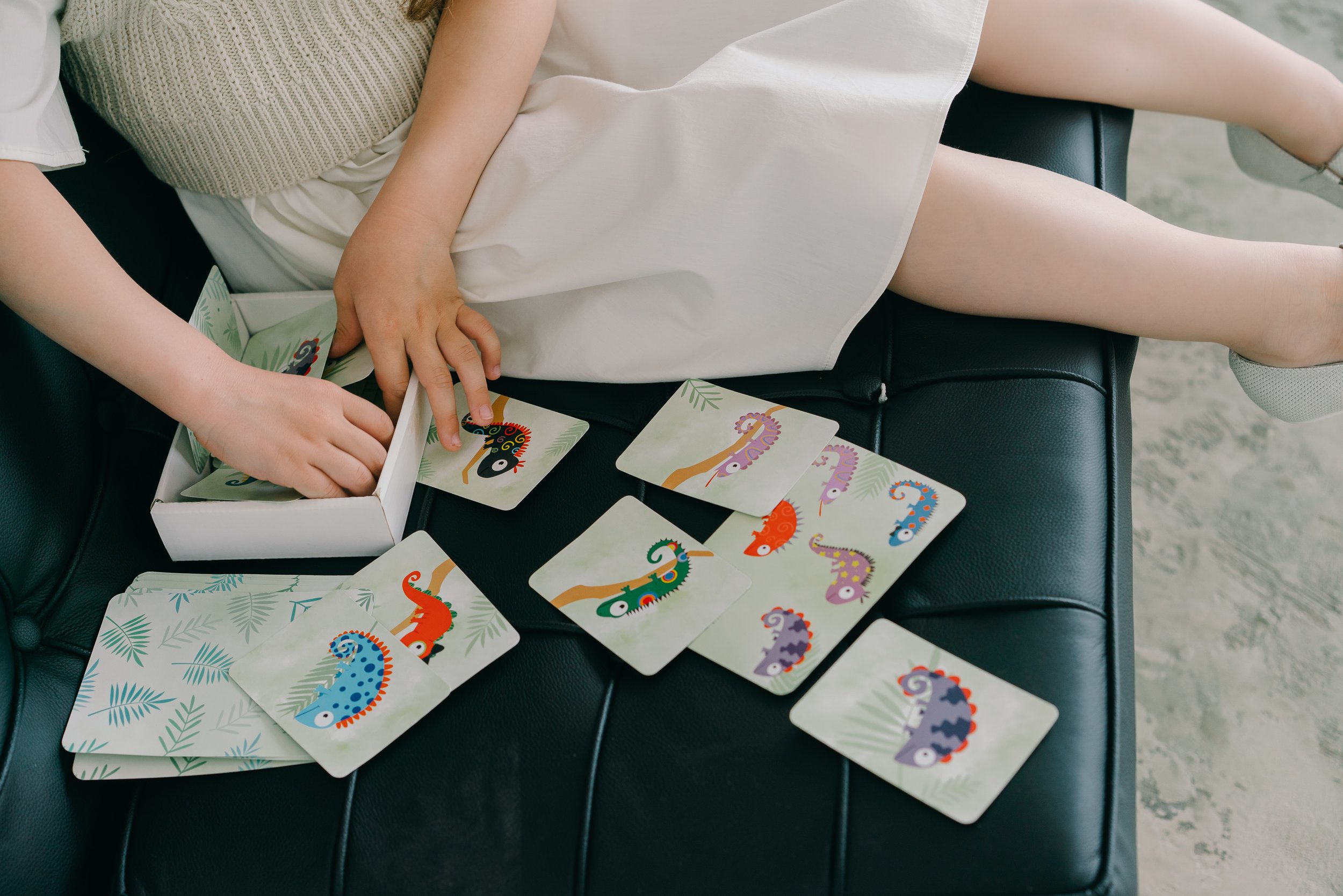
Services
-

Individual Therapy
Individual therapy is a type of psychotherapy that involves a one-on-one relationship between the therapist and client. The purpose of individual therapy is to help the client understand his or her own thoughts, feelings, and behaviours. The therapist may also help the client develop healthier ways of thinking about themselves, other people, and their world.
-

Couples Therapy
Marriage prep therapy and family therapy address many topics that are important for healthy relationships, including conflict management, communication skills, understanding your needs and desires, emotional regulation and forgiveness skills.
-

Children & Adolescents
Child and adolescent therapy can give kids the tools to overcome struggles, provide a safe place to explore feelings or the extra little boost to achieve that goal. When it comes to your children, you want the best and a little guidance can lead to healthy life. Our therapists can draw upon a multitude of experience and researched domains such as art intervention, mindfulness, and thought re-framing to build a connection and give your kid the resources to succeed.
INDIVIDUAL THERAPY
Individual therapy is a type of psychotherapy that involves a one-on-one relationship between the therapist and client. The purpose of individual therapy is to help the client understand his or her own thoughts, feelings, and behaviors. The therapist may also help the client develop healthier ways of thinking about themselves, other people, and their world.
-
Grief Recovery Method® is a type of therapy that focuses on the grieving process. It helps people deal with the pain of loss through a step-by-step approach and can be used to help you move through your grief in a healthy way. This means that you'll have time set aside each week for working through your feelings about what has happened, as well as learning new skills to help you cope with those feelings. Grief can come from many types of loss including:
• Death of a loved one
• Loss of a pet
• Divorce or seperation
• Pregnancy loss or infertility
• Chronic illness or injury
• Loss of health
• Moving
• Loss of home
• Loss of faith
• Financial loss or job loss
• Life changes such as having a baby or marriage
• Graduation or moving on form something
• Psychological Diagnosis
• Loss of meaning, dreams, or expectations
-
Eye Movement Desensitization and Reprocessing (EMDR) is a psychotherapy treatment that involves recalling distressing memories and re-experiencing them in a controlled way. The brain’s information processing system naturally moves toward mental health. If the system is blocked or imbalanced by the impact of a disturbing event, the emotional wound festers and can cause intense suffering. Once the block is removed, healing resumes.
EMDR therapy is an eight-phase treatment. Eye movements (or other bilateral stimulation) are used during one part of the session. After the clinician has determined which memory to target first, the client is asked to hold different aspects of that event or thought in mind and to use their eyes to track the therapist’s hand as it moves back and forth across the client’s field of vision. As this happens, internal associations arise and the clients begin to process the memory and disturbing feelings. In successful EMDR therapy, the meaning of painful events is transformed on an emotional level and creates a cognitive shift. This process helps people with PTSD deal with their traumatic pasts by reducing their emotional impact on daily life. Dealing with your pain and hurt can help you to make the necessary changes you desire.
-
Hypnosis is a trance-like state. It's not sleep, but it's also not something that you can just snap out of. It's similar to meditation in that way - you're calm and relaxed, but you're still very much aware of what is happening around you.
People often confuse hypnosis with mind control or being put under someone else's power (which is why we use terms like "guided imagery" instead of "hypnotic induction"). But there are no magical powers involved here! A therapist who uses hypnosis will help guide the client through their own imagination in order to achieve specific goals such as pain management or reducing anxiety levels related to phobias or panic attacks.
-
Cognitive Behavioral Therapy (CBT) aims to help you identify and explore the ways your emotions and thoughts can affect your actions. Once you notice these patterns, you can begin learning how to change your behaviours and develop new coping strategies.
CBT is based on several core principles, including:
Psychological issues are partly based on problematic or unhelpful patterns of thinking.
Psychological issues are partly based on learned patterns of unhelpful behavior.
Psychological issues are partly based on problematic core beliefs, including central ideas about yourself and the world.
People experiencing psychological issues can learn better ways of coping with them. This can help relieve their symptoms and improve their mental and emotional health.
During CBT, a mental health professional helps you take a close look at your thoughts and emotions. You’ll come to understand how your thoughts affect your actions. Through CBT, you can unlearn negative thoughts and behaviors and learn to adopt healthier thinking patterns and habits. Using a question-and-answer format, your therapist helps you gain a different perspective.
-
Psychodynamic therapy (PDT) is a form of talk therapy. It is based on the idea that talking to a professional about problems people are facing can help them find relief and reach solutions. PDT's basis states deriving insights from childhood can give patients insights about their current problems to help them achieve a higher quality of life.
In any type of psychotherapy, the relationship between the patient and therapist is important, but especially in PDT. Psychodynamic therapy's success relies heavily on trust, since the topics discussed during sessions are often sensitive or traumatic. Changing old patterns and healing resurfacing wounds can have profound effects on your life. Dealing with your pain and hurt can help you to make the necessary changes you desire.
PDT can be compared to other popular forms of therapy, such as cognitive behavioral therapy (CBT). Both aim to help patients increase their self-awareness and gain more control over their own mental health, however PDT puts a higher emphasis on unpacking how past traumas affect current emotions.
-
Dialectical behaviour therapy (DBT) is a type of psychotherapy based on cognitive behavioural therapy (CBT), but specially adapted for people who experience emotions very intensely. The key difference between CBT and DBT lies in the concept of validation and relationships. DBT teaches that our experiences are real/valid and to accept them as such. It also informs us that we must make positive changes if we wish to have a healthy relationship with the ever-changing, and often-challenging world around us.
DBT works towards reducing one’s emotional distress that negatively impacts their wellbeing and the way they interact with their surroundings. More specifically, DBT focuses on skills training and includes mindfulness, emotion regulation, interpersonal effectiveness and distress tolerance.
-
Solution-Focused Brief Therapy (SFBT) is a hope friendly, positive emotion eliciting, future-oriented approach for formulating, motivating, achieving, and sustaining desired behavioural change. SFBT doesn’t require a deep dive into your childhood and the ways in which your past has influenced your present. Instead, it will root your sessions firmly in the present while working toward a future in which your current problems have less of an impact on your life.
The word “brief” in Solution-Focused Brief Therapy is key. The goal of SFBT is to minimize time spent in therapy and time spent struggling by finding and implementing a solution to the problem or problems as soon as possible. SFBT is committed to finding realistic, workable solutions for clients as quickly as possible and the efficacy of this treatment has influenced its spread around the world and use in multiple contexts.
-
To be mindful is to observe and label thoughts, feelings, and sensations in the body in an objective manner. Mindfulness can be a tool to avoid self-criticism and judgment while identifying and managing difficult emotions. Mindfulness therapy is not concerned with relaxation, though that might be a result of certain practices. The focus is on increasing our awareness of the thoughts, feelings, and actions that hinder our progress.
Mindfulness-Based Cognitive Therapy (MBCT), is a modified form of cognitive therapy that incorporates mindfulness practices that include present moment awareness, meditation, and breathing exercises. Using these tools, the mindfulness-based therapist teaches a client to be in the here and now as well as break away from negative thought patterns that can cause a decline into a mood-disordered state.
COUPLES THERAPY
Marriage prep therapy is a process that helps couples to prepare for marriage and make the most of their relationship. Couples can use this therapy before they get married or at any point in their relationship. Whether you've just started dating or have been together for years, it's never too late to make your relationship stronger!
-
The Gottman Method is a couples therapy approach that focuses on improving communication and understanding in relationships. The basic premise behind the Gottman Method is that relationships can be strengthened if couples learn to recognize negative patterns in their interactions with each other, replace those patterns with more positive ones, understand each other better (and themselves), resolve conflict constructively rather than destructively, deal with problems as soon as possible instead of letting them fester or ignore them altogether.
Treatment begins with a conjoint session, followed by individual interviews with each partner. Couples complete questionnaires and then receive detailed feedback on their relationship, after which the couple and therapist decide on the frequency and duration of the sessions. Interventions are designed to help couples strengthen their relationships in three primary areas: friendship, conflict management, and creation of shared meaning. Couples learn to replace negative conflict patterns with positive interactions and to repair past hurts. Interventions designed to increase closeness and intimacy are used to improve friendship, deepen emotional connection, and create changes which enhances the couples shared goals.
-
Emotionally Focused Couple Therapy (EFCT) helps couples build strong, healthy relationships by exploring and changing emotional dynamics to enhance mutual understanding and closeness.
CHILD AND ADOLESCENT THERAPY
Children and adolescents deal with lots of emotions and feelings as their brain develops. Our therapists can empower them to find positive ways to express themselves to feel validated. They will benefit from better self-regulation, self-esteem, and brim with confidence as they continue to learn, grow, and thrive.
-
When working with children, a therapist may use art as a way to help a child or adolescent explore self-expression and, in doing so, find new ways to gain personal insight and develop new coping skills. The creation or appreciation of art is used to help people explore emotions, develop self-awareness, cope with stress, boost self-esteem, and work on social skills.
Types of art can include colouring, drawing, painting, sculpting, and more. As clients create art, they may analyze what they have made and how it makes them feel. Through exploring their art, people can look for themes and conflicts that may be affecting their thoughts, emotions, and behaviours. Clients can benefit from expressing themselves creatively.
-
Therapy with children often involves play, as play provides a means for communicating stressful thoughts or uncomfortable feelings that may be difficult for some children to put into words. Therapy with children attempts to recreate a child’s concerns in a safe and manageable way and to facilitate learning of healthy problem-solving and coping skills.
Through the use of play, in combination with an underlying evidence-based cognitive-behaviour therapy framework, therapy can help children gain understanding, comfort, empowerment, and a sense of mastery over their emotions and the stressors in their lives.
Board Games in Therapy
Playing board games helps a child develop logic and reasoning skills, and improve critical thinking. While playing board games, a child needs to think ahead and make decisions rapidly. Not only this, it also aids in the development of social skills which can carry over into other aspects of their lives.
Board and card games are a tool often used in therapeutic practice, as they contribute to the development of many cognitive and social-emotional skills. When a child learns and masters a new board game, the sense of accomplishment they feel does wonders for their confidence. They can also aid in building up their self-regulation skills by helping them work through the distressful situation of the unpredictability that can come with board games. This is called distress tolerance. The more the child plays board games, the easier it will be for the child to handle the uncertainty that comes with each turn.
-
Cognitive Behavioral Therapy is a skill-based therapy that’s used with both kids and adults. It’s a way of dealing with anxiety that’s focused on the present, rather than the past. Regardless of where the anxiety came from, anxious kids need strategies to deal with it, which is the main goal of CBT: learning tools to cope with anxiety when it arises, both now and in the future. A child in CBT therapy might learn any or all of the following techniques:
• Relaxation techniques to calm the body
• Mindfulness or grounding skills to focus attention during times of stress
• Keeping a journal or written log to track worries at home
• Practicing “cognitive restructuring”, a way of transforming unhelpful worries
• Gradually exposing themselves to things that trigger anxiety
• Using roleplay to practice skills
• Doing “experiments” in real life to test if their fears really come true
Frequently Asked Questions
-
At Center Street Psychology fees are consistent with the recommended fee schedule set by the Psychologists’ Association of Alberta:
Individual Therapy is $235 for a 50-minute session.
Couples Therapy is $235 for a 50-minute session.
Family Therapy is $235 for a 50-minute session.
We also offer reduced rates to meet your needs.
If you have any questions about fees, please reach out to our Director of Client Care by phone (call or text): 403 - 399 - 5120 or email at: hello@centerstreetpsychology.com to discuss your options.
*Please check with your benefits provider to see if our services are covered under your plan. We accept benefits from all major providers.
-
Yes, we offer direct billing with all major benefit providers if it is a part of your benefits plan.
-
Seeing a psychologist can be a great way to improve your mental health. It can help you figure out what's going on in your head, and it can provide you with the tools you need to help yourself feel better. Here are some of the benefits of seeing a psychologist:
-You'll gain insight into what's causing negative feelings or behaviors in your life.
-You'll learn how to manage those feelings and behaviors, so they don't take over and cause problems for you anymore.
-You'll gain tools that will help you live a happier life!
-
At your first appointment, you'll have a chance to meet with your psychologist and talk about what you're going through. You can expect to discuss things like your goals and expectations for therapy, how often you'd like to meet, and what kind of support you might need from family members or friends.
If you haven't seen a psychologist before, it's normal to feel nervous or even scared. But don't worry! Your psychologist is there to help you and make sure that you feel safe during this process.
-
You are the expert in your journey. It’s important you find a therapist that fits your needs. The relationship you have with your therapist is imperative for the client to meet their desired outcomes.
If a psychologist is a good fit, you should feel comfortable, heard, and safe. Many people go through life feeling like they are not good enough or can’t achieve their goals. Having a safe space to talk about your thoughts and feelings can be very helpful in learning more about yourself and figuring out ways to change the things that don’t work for you.
-
No, you do not need a referral to see a psychologist. You can choose to see a psychologist without anyone else's input, but if you do want to talk to your doctor or other health care professionals about why you think seeing a psychologist would be helpful for you, they can give you feedback and advice on how they think it might go.
Additionally, we are a team-based organization and want to provide comprehensive psychological care, which may involve us working with your doctor, psychiatrist, or other health care professionals if necessary.
-
We believe in collaborative care, meaning we want to find a balance between respecting your requests as the parent, and allowing a child/adolescent to have their own voice and be heard.
We encourage you to accompany your child/adolescent for their first visit, after which we can determine whether attending the session with them will be more beneficial, or if having you wait in our waiting area is better suited for their needs.
-
The length of time it takes for therapy to work depends on the person, their experience with therapy and the issues they are working through.
In general, clients will often start to feel relief after about 8 sessions. We recommend staying in therapy for 3-6 months at a time before making a decision about whether or not you want to continue.

